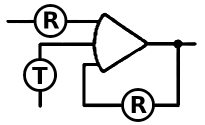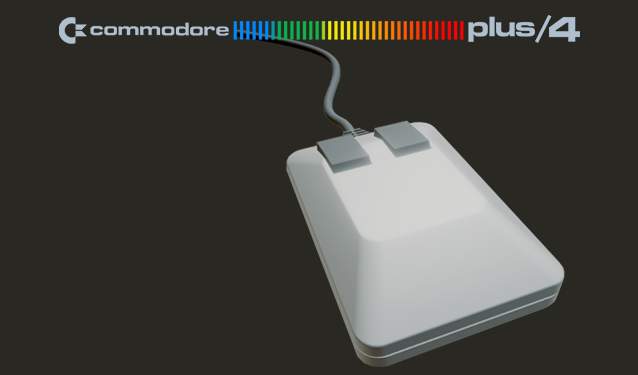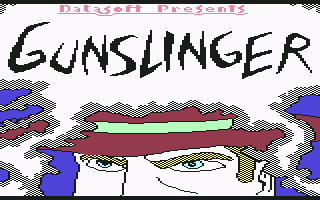The Commodore 264 series, while lesser known than its more famous counterpart, the Commodore 64, holds a significant place in the history of home computing. Among the machines in this series, the Commodore Plus/4 stands out as a unique offering from the company. Released in 1984, the Plus/4 was intended to be a successor to the Commodore 64, offering enhanced features and capabilities. However, despite its potential, it didn't achieve the same level of popularity as its predecessor.
The Commodore Plus/4 had a built-in office suite that included software for word processing, spreadsheets, database management, and graphics. This was a departure from the game-centric focus of the Commodore 64, and aimed to position the Plus/4 as a productivity machine for home and small business use. Despite these efforts, the Plus/4 struggled to gain traction in the marketplace, in part due to its incompatibility with the vast library of software available for the Commodore 64.
However, enthusiasts and developers continued to explore the capabilities of the Commodore Plus/4, resulting in the creation of various peripherals and extensions to enhance its functionality. One such development is the Mouse Extension v1.0, a groundbreaking addition that brings mouse support to the Commodore Plus/4.
Exploring Commodore Plus/4 Mouse Extension v1.0
The Mouse Extension v1.0 offers a plethora of features designed to enhance the usability and versatility of the Commodore Plus/4. Let's look at some of the most important features:
PS/2, Serial, and Commodore 1351 and Amiga Mouse Compatibility
One of the outstanding features of the Mouse Extension v1.0 is its compatibility with a wide variety of mouse types. Whether you have an Amiga mouse connected via NST's audio extension, an RS232 serial mouse using ACIA, or a Commodore 1351 mouse with a SID card, this extension has you covered. This compatibility opens up new possibilities for navigation and interaction on the Plus/4.
Cursor Modes
The extension supports several cursor modes to accommodate different display setups. Whether you're working in character mode or high-resolution graphics mode, the Mouse Extension v1.0 provides graphical cursors that enhance the visual experience. This flexibility ensures smooth navigation between different applications and environments on the Commodore Plus/4.
Split Screen Handling in the Plus/4 and 64K Expanded C16 and C116
In both graphical modes, the Mouse Extension v1.0 seamlessly handles split-screen scenarios. This functionality is critical for applications and games that utilize split-screen displays, ensuring that the mouse pointer behaves intuitively across all areas of the screen.
Command Mode
The extension introduces a command mode that enhances user control and interaction. Navigating through applications becomes more efficient with intuitive commands mapped to mouse clicks and keyboard shortcuts. For example, a left-click places the original cursor at the cursor position, while a right-click clears the current cursor position.
Commodore 16, C116, and Plus/4 Hot Keys
Mouse Extension v1.0 includes convenient hotkeys for quick access to essential functions. Whether you need to exit the extension or perform specific actions such as moving the pointer, left-clicking, or right-clicking, the hotkeys streamline the user experience. This combination of mouse controls and keyboard shortcuts allows users to navigate the Plus/4 with ease and efficiency.
CTRL + F1: Exit
CTRL + inst/del (in this version): Exit
CTRL + cursors: move the pointer
CTRL + space: Left click
CTRL + return: right click
COMMODORE + click + cursor move up/down: reposition the split row
After exiting the driver you can restart it by issuing the commands sys1015 or g03f7 .
Commodore Plus/4 Mouse Memory Optimization
Efficient memory usage is a priority in the design of the Mouse Extension v1.0. By utilizing only the reserved memory addresses for RS232 communication, the extension minimizes its footprint while maximizing performance. This optimization ensures that the Plus/4 retains its responsiveness even with the extension running in the background.
Addresses for reading pointer positions are as follows:
$042D: X in multicolor mode (0-159)
$042E: X in Char mode (0-39)
$042F: Y in Char mode (0-24)
$0430: Buttons (bits: LMR00000) (128=left-button pressed)
$0431: X high-bit in hires mode (0-1)
$0432: X low-byte in hires mode (0-255)
$0433: Y in hires mode (0-199)
$0434: X high-bit for BASIC (0-1)
$0435: X low byte for BASIC (0-255)
$0436: Y for BASIC (0-199)
Refill BASIC pointers: $0420
Refresh BASIC pointers: sys1065
Runtime memory addresses:
$FC, $FD: RS232 zero page pointers
$03F7-0436: RS232 addresses for the routines
$07CD-$07D8: RS232 buffer
$F270-$FADE: The driver
Commodore Plus/4 Mouse Testing and Compatibility
The Commodore Plus/4 Mouse Extension v1.0 has undergone rigorous testing to ensure its reliability and compatibility with various setups. From NST's audio extension ( http://bsz.amigaspirit.hu/nae/index_hu.html ) with Amiga mouse mode, to RS232 mouse connections, to Max 232 IC with PC serial mouse setups, the extension has been put through its paces. Feedback from testers confirms its effectiveness in various configurations, making it a versatile addition to the Plus/4 ecosystem. Though, you need to add ACIA chip for your C16 and C116, and expand the RAM to 64K to be able to use this extension in your C16 or C116. Or you can try İlker Fıçıcılar's Commodore mouse driver for the Commodore 16 and Commodore 116.
The Commodore Plus/4 Mouse Extension v1.0 by Szilveszter Bencsik is a remarkable achievement in expanding the capabilities of the Commodore Plus/4. By introducing mouse support and a number of features designed to enhance user interaction, this extension breathes new life into the platform. Whether you're a seasoned enthusiast or a curious newcomer, the Mouse Extension v1.0 opens up exciting possibilities for exploration and creativity on the Plus/4. With its intuitive controls, memory optimization, and broad compatibility, it's a must-have for anyone who wants to get the most out of their Commodore Plus/4 experience.
Conclusion and Future Prospects
As we conclude our exploration of the Mouse Extension v1.0 and its impact on the Commodore Plus/4, it's worth considering the broader context of retro computing and the potential for mouse support on other platforms in the Commodore 264 series.
While the Commodore Plus/4 stands as a testament to the ingenuity of its time, it's important to acknowledge its siblings, the Commodore 16 and Commodore 116. While less well known, these machines share the same lineage and offer similar capabilities. With advances in peripheral development and software innovation, there's a growing interest in expanding the functionality of these retro computers.
The introduction of mouse support through extensions such as Mouse Extension v1.0 represents a significant step forward in enhancing user interaction and productivity on these vintage systems. By bridging the gap between traditional keyboard-based input and modern mouse-driven interfaces, enthusiasts are able to rediscover the potential of these classic machines in new and exciting ways.
Looking ahead, there are promising prospects for extending mouse support to the 64K Commodore 16 and Commodore 116. With continued community involvement and developer dedication, we may see similar enhancements tailored to these platforms, opening up a wealth of possibilities for navigation, gaming, and software development.
As the retro computing scene continues to thrive, there's also a growing ecosystem of hardware adapters and peripherals to meet the needs of enthusiasts. From USB to PS/2 adapters to custom interfaces, the options for connecting modern input devices to vintage computers are expanding, opening doors to new experiences and creative projects.
In this ever-evolving landscape of retro computing, the journey doesn't end with the past. Instead, it's a testament to the enduring legacy of these iconic machines and the passion of those who keep their spirit alive. Whether you're a seasoned collector, a hobbyist tinkerer, or a curious newcomer, the world of retro computing offers limitless opportunities for exploration and discovery.
So, as we conclude to our exploration of the Commodore 16, Commodore 116, and Commodore Plus/4 Mouse Extension v1.0 and its impact on the Commodore Plus/4, let's embrace the possibilities that lie ahead. With innovation, collaboration, and a touch of nostalgia, the future of using a mouse with these retro computers is indeed a bright and exciting.
Further reading:
. Download link for the mouse driver for the Plus/4, C16, and C116
. Gitlab page of the Plus/4 mouse
. Plus/4 mouse driver documentation
. Discussions on the Plus/4 mouse in the Plus4World Forum
. Plus/4 RS232 Documentation in PDF
. NST's audio extension for the Commodore Plus/4
. C16, C116, Plus/4 Joystick Interface (not directly related with the mouse driver in this page)














